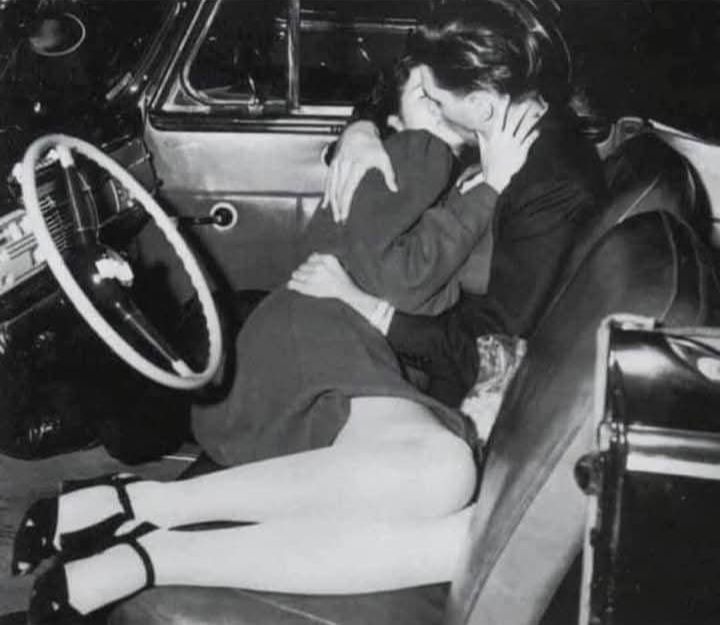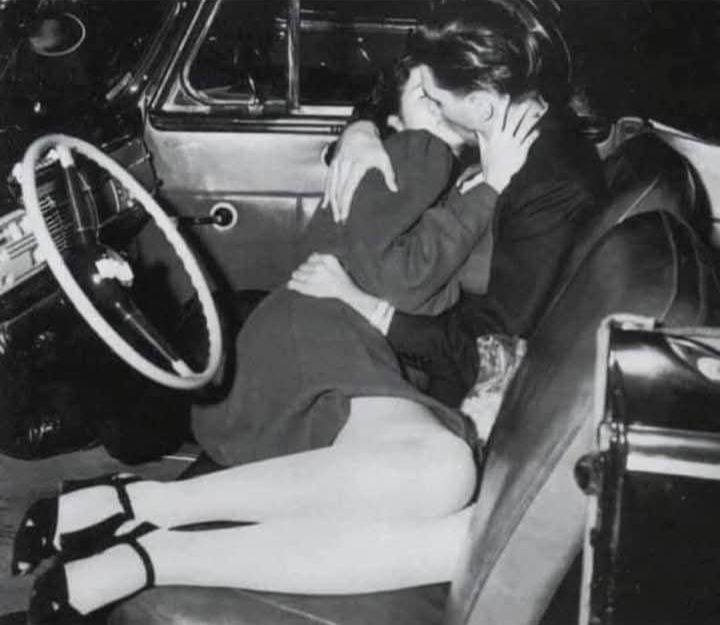In this photo, a couple sits closely on a front bench seat—a feature that once symbolized comfort and togetherness in American cars. These seats allowed families and couples to share space freely, a design that faded as automotive styles changed.
Bench seats originated in the early 1900s, modeled after carriage seating. They were common in cars like the Ford Model T and luxury vehicles from Cadillac and Packard. Through the mid-20th century, bench seats were standard, especially in American sedans. The ’60s and ’70s saw their peak popularity with cars like the Chevrolet Impala and Cadillac DeVille.

The wide, continuous seat could hold three people comfortably. Without a center console, passengers could slide across easily. Column shifters kept the floor clear. Upholstery options added to their inviting feel.
Bench seats had many advantages. Before modern seat belt laws, they allowed up to six passengers—three in front, three in back. They were practical in taxis, police cars, and trucks. The extra room made long drives more comfortable.
Safety regulations and changing tastes in the ’80s led to their decline. New seat belt designs and airbags required different layouts. Buyers wanted more personal comfort and sporty styles favored bucket seats. Center consoles added convenience but replaced bench seats.
By the early 2000s, bench seats mostly disappeared from cars. The 2013 Chevy Impala was the last sedan with one. Today, bench seats survive mainly in pickup trucks and classic restorations.
Though rare, bench seats remind us of a time when cars were simpler and more connected. They hold a special place in the hearts of many who remember family trips and quiet moments shared side by side.


